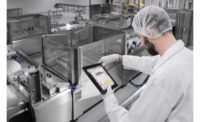In food manufacturing, the first to respond wins. Consumer tastes continually change, the channel to market is constantly evolving and product innovation is a fundamental requirement. Under constant price and service level pressure from retailers and dealing with unique, complex manufacturing processes, the food industry seems to be in a perpetual battle to further improve efficiencies. In this environment, manufacturers must be proactive about simplifying complex supply chains, or risk falling behind their competitors.
To accomplish this, a comprehensive view of the business is essential, a view that captures the idiosyncrasies of food manufacturing while providing the vital business information that decision makers require to stay one step ahead. For many companies, this means implementing digital strategies to provide a competitive advantage. Manufacturers need not be daunted by “going digital”; cloud technology can provide food and beverage companies with the always-modern functionality and flexibility needed to react quickly to changing market conditions and use data-rich analytics to strengthen customer relationships and better manage their businesses.
Planning visibility
While companies start each fiscal year with a plan, the reality is that these need to be continuously updated based on everything from changing market demand to ingredient availability. Yield variations are commonplace, and the use of different grades of ingredients – due to seasonal availability – can lead to production variations. A smart network of suppliers and vendors, supported by a flexible cloud architecture, provides food companies with increased visibility into every step of the supply chain process. The flexible scale and scope of cloud technology allows manufacturers to integrate with partners and keep track of ingredients at every point along the supply chain.
In addition, food companies are often dependent on volume-based assets – such as tanks, silos, ovens, drums, coolers and vats – that can make the production scheduling process extremely complex. The unique challenges of batch scheduling, such as hold times, cleaning, line loss and variability in capacity all must be taken into account. In addition to processing, packaging creates additional challenges, such as high-speed packing lines and dozens of lines running 24 hours a day – requiring a continuous flow of product and packaging.
Faced with a raft of data from various sources coming in at various times and in various formats, operations managers must make sense of the data to inform and underpin their decisions. This information not only forms the basis of production plans, but also enables the business to identify potential efficiency savings throughout the manufacturing process, as well as the ability to implement sometimes rapid change.
The value of the cloud
Modern cloud enterprise resource planning (ERP) solutions can bring the increased flexibility, analytics and interoperable functionality to manufacturers contending with disruptive changes across their business. End-to-end visibility from plant to plant, vendor to vendor and customer to customer empowers food companies with the actionable insights needed to make strategic decisions.
With their vast storage capabilities, cloud solutions enable food and beverage manufacturers to leverage Internet of Things (IoT) and predictive analytics. This helps companies anticipate demand changes and cope with evolving market trends. Unforeseen changes in demand can lead to delivery bottlenecks, which in turn lead to lost revenue. When problems arise within the supply chain, cloud-empowered manufacturers are more aware of options for handling the issue.
With the cloud, the limitations of using outdated and heavily modified applications to run a business are gone. The modern capabilities help manage forecasting, planning, traceability and formula optimization within one uniformed platform. Only with an integrated solution can decision makers adapt and update operational processes quickly and effectively, optimizing processes to drive overall cost and efficiency savings.





